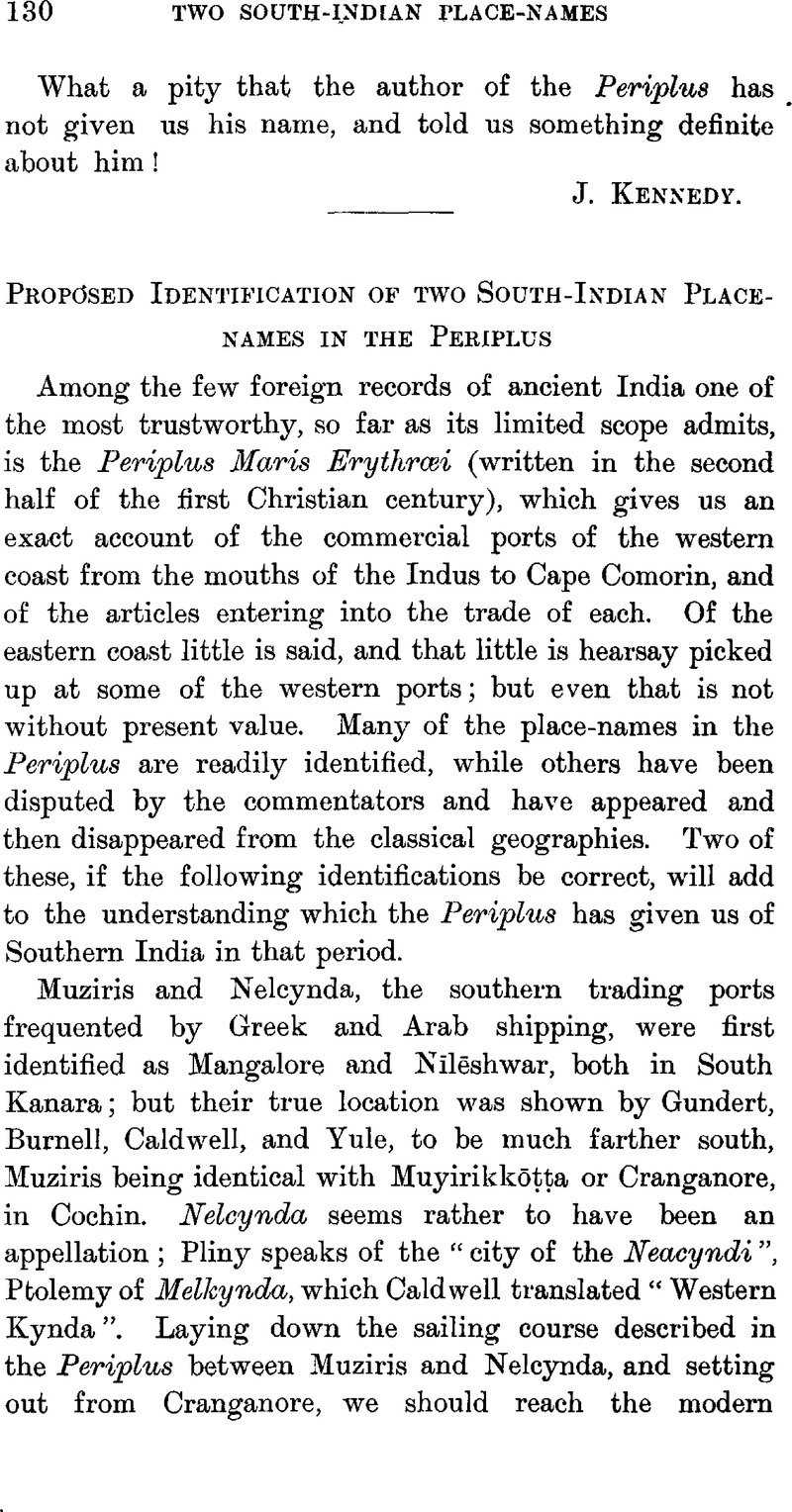No CrossRef data available.
Article contents
Proposed Identification of two South-Indian Place-names in the Periplus
Published online by Cambridge University Press: 15 March 2011
Abstract

- Type
- Miscellaneous Communications
- Information
- Copyright
- Copyright © The Royal Asiatic Society 1913
References
page 131 note 1 Κε![]() ται δ κα αὐτ παρ ποταμν ὡ σε π σταδίων ῐκοσι τ
ται δ κα αὐτ παρ ποταμν ὡ σε π σταδίων ῐκοσι τ![]() ς θαλάσσης. Ἑτέρα δ κατ᾽ αὐτ τ στόμα το
ς θαλάσσης. Ἑτέρα δ κατ᾽ αὐτ τ στόμα το![]() ποταμο
ποταμο![]() πρόκειται κώμη Βακαρ, εἰς ἤν π Νελκύνδων π τ
πρόκειται κώμη Βακαρ, εἰς ἤν π Νελκύνδων π τ![]() ς ναγωγ
ς ναγωγ![]() ς προκακαβαίνει τ πλο
ς προκακαβαίνει τ πλο![]() α κα π σάλου διορμίξεται πρς νάληψιν τ
α κα π σάλου διορμίξεται πρς νάληψιν τ![]() ν φορτίων δι δ τν ποταμν ἕρματα κα διάπλους ἔχειν οὐκ λαφρούς.
ν φορτίων δι δ τν ποταμν ἕρματα κα διάπλους ἔχειν οὐκ λαφρούς.
page 131 note 2 Imperial Gazetteer of India.
page 132 note 1 Μετ δ Κόλχους κδέχεται τόπος ἕτερος Αἰγιαλς λεγόμενος ν κόλπψ κείμενος, ἔχων χώραν, λεγομένην Ἀργάρο![]() ν ν τούτψ τ
ν ν τούτψ τ![]() τόπψ ὠνε
τόπψ ὠνε![]() ται τ παρ᾽ αὐτν τν ἤπειρον συλλεγόμενον πινικόν. Φέρονται κα ξ αὐτ
ται τ παρ᾽ αὐτν τν ἤπειρον συλλεγόμενον πινικόν. Φέρονται κα ξ αὐτ![]() ς σινδόνες αἱ Ἀργαρίτιδες λεγόμεναι
ς σινδόνες αἱ Ἀργαρίτιδες λεγόμεναι
page 133 note 1 [And it may be suggested that at some time or another, through the use of cursive forms, a υ has been mistaken for, and turned into, a γ, perhaps by some early copyist.—Ed.]




